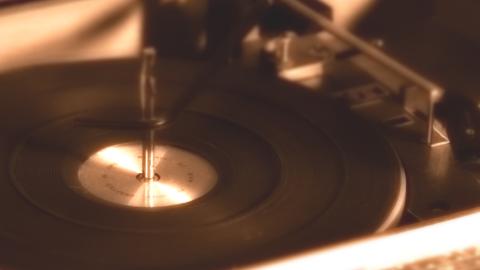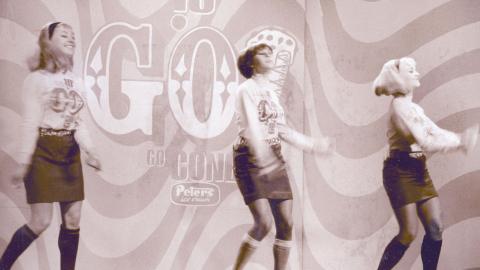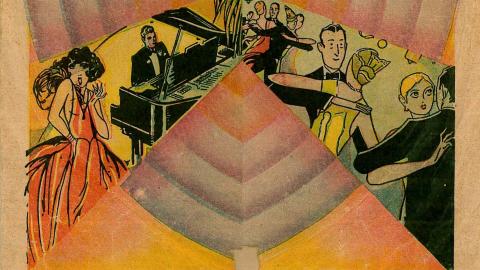
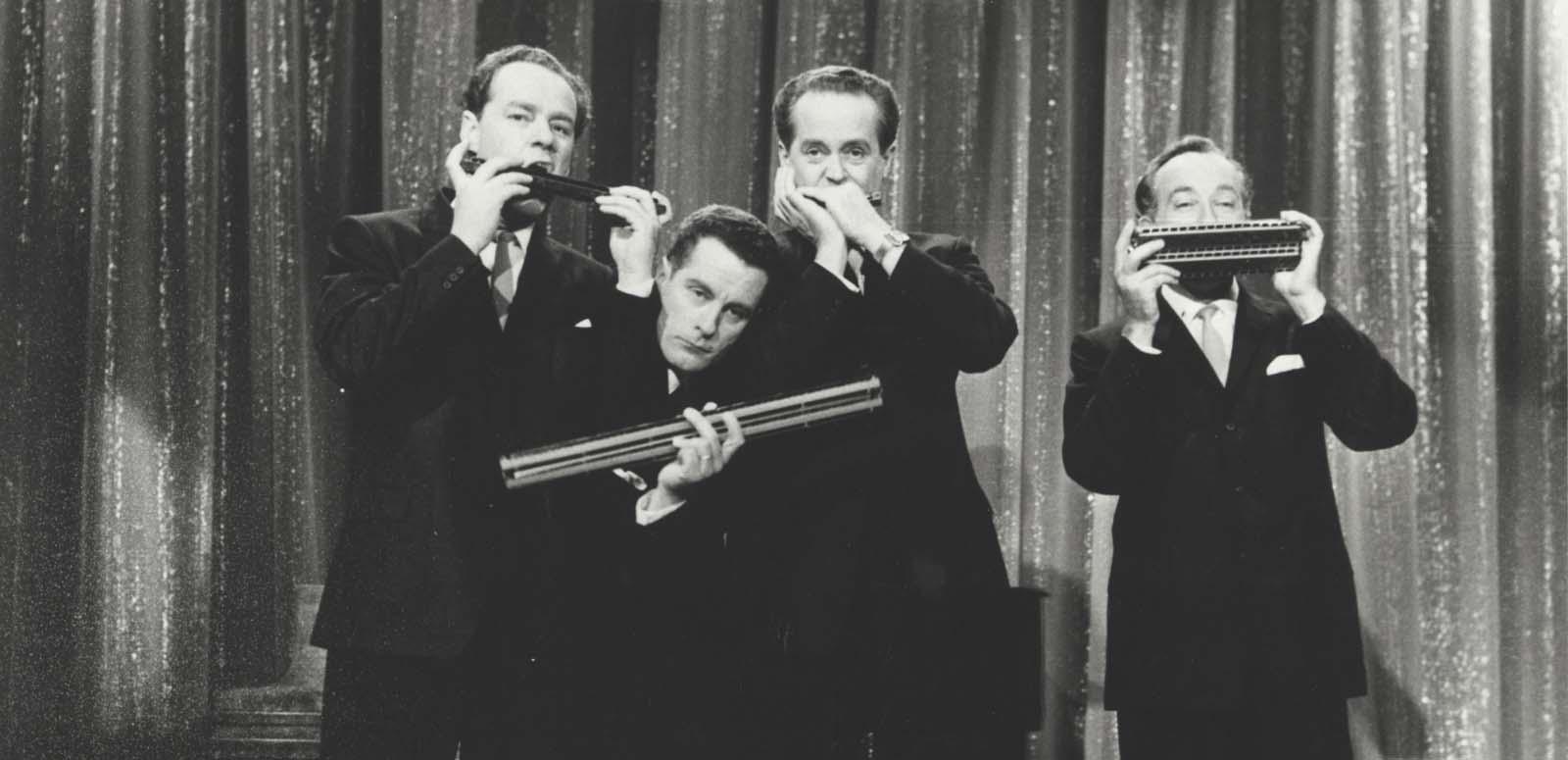
Australia's first gold record
What was Australia’s first gold record? You may be surprised to learn that it involved a harmonica and the Three Bears.
The live concert recording Horrie Dargie Concert (1952) was awarded a gold record when it sold 75,000 copies. The Horrie Dargie Harlequintet (more commonly known as The Horrie Dargie Quintet) was led by harmonicist Horrie Dargie, who was born 100 years ago, on 7 July 1917. Listen to ‘The Three Bears’, the opening number from the album:
'The Three Bears' from the Horrie Dargie Concert, 1952. NFSA title 281525
Who was Horrie?
While Horrie Dargie would not be familiar to many in gen X or Y, his recording and performance career extended from the 1930s to the 1980s and included arranging music for film (Crocodile Dundee) and television (The Leyland Brothers).
Dargie began his recording career in 1938 and after winning the 3KZ P&A Parade, he released his first single with Columbia. Moving to Sydney and forming the Rocking Reeds, he released six more recordings, before joining the Army in 1941. Returning from service in New Guinea, he formed The Horrie Dargie Quintet in Sydney.
The quintet had a heavy performance schedule, sometimes playing two shows a night. Their popularity soon rose to the point of booking an overseas tour, but not before a farewell concert at the Sydney Town Hall on 18 November 1952.
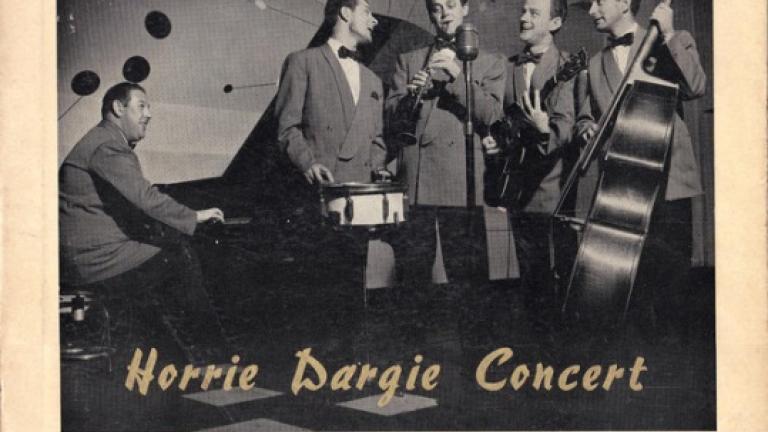
Horrie Dargie Concert record sleeve, 1952 - front cover. NFSA title 281525. Click image to open
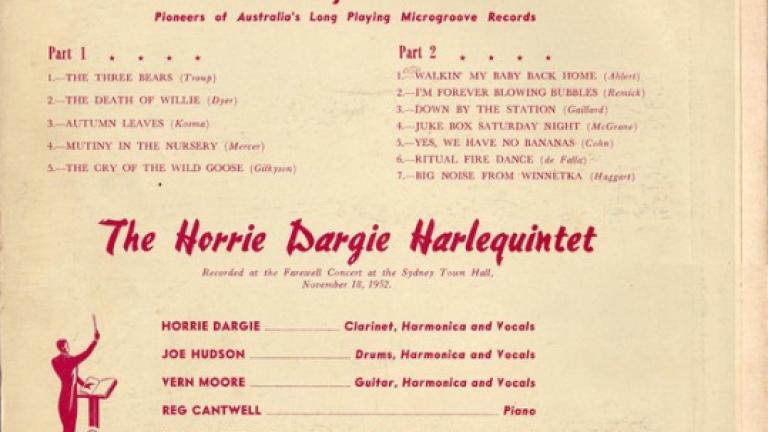
Horrie Dargie Concert record sleeve, 1952 - back cover. NFSA title 281525
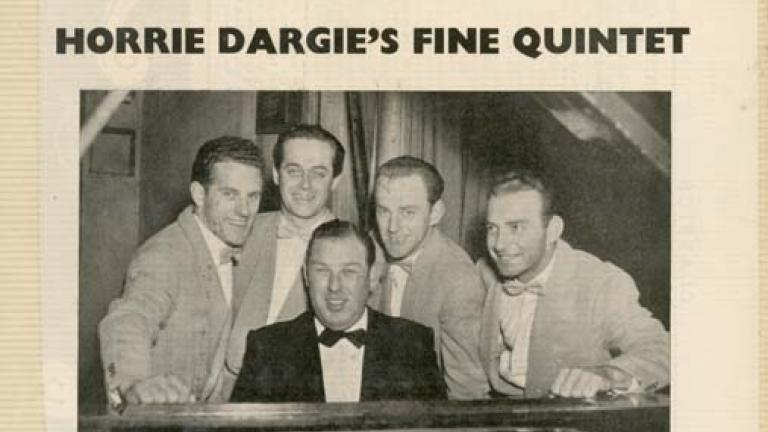
Horrie Dargie Quintet in Tempo magazine, 1952. NFSA title 751121
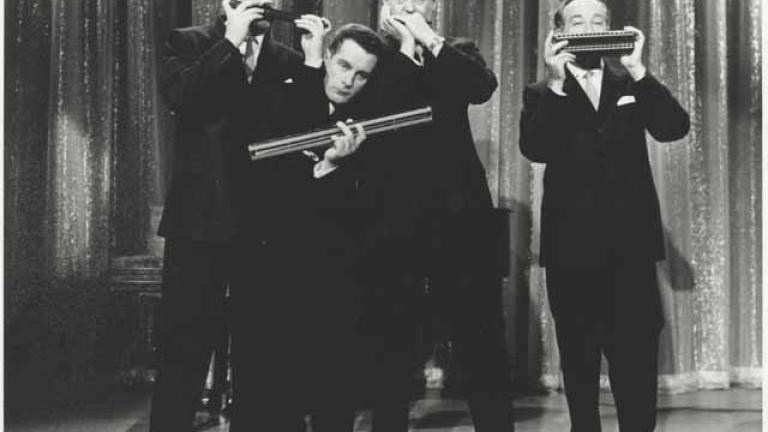
The Horrie Dargie Quartet on stage, c1959. NFSA title: 484525
Making the live recording
The Town Hall concert was recorded on Pyrox Wire Recorder, on a wire that was 1.5 miles long (one-thousandth of an inch in diameter) and ran for one hour. At the time Australian recordings were still being pressed on 78s in shellac, but microgroove LPs had just arrived. According to pioneer music producer Bill Armstrong, an AWA lathe had to be repurposed to cut the new microgroove LP for the live record. While the lathe had been geared for 120 grooves per inch (for 78s and 16-inch radio transcription discs), a special lead screw and half-nut was made to cut 200 grooves per inch for the microgroove LP. Also different was the radius of the grooves: a sapphire cutting stylus ground to a tip a radius of 1 mm instead of the usual 3 mm grooves on 78 discs.
The 10″ LP record of Horrie Dargie Concert (1952) sold exceptionally well, soon reaching 75,000 copies sold – becoming Australia's first gold record.
From the Tivoli to the TV
Following their Sydney farewell concert The Horrie Dargie Quintet toured England but Dargie contracted polio in London. It paralysed him except for his right arm and ability to swallow; at the time he was told he would not be able to play a wind instrument again. However, with persistence he recovered, returning to Sydney in 1958. After performing a series of shows at the Tivoli Theatre, Dargie worked at Channel 9, where he was in charge of the talent division, compered the BP Super Show and The Price is Right, and managed the Go!! show and the Delo and Daly Show.
Horrie Dargie is best remembered as the dominant figure in Australian harmonica playing, his 15 albums showcasing his consummate skills and the ‘unsuspected character’ of the harmonica itself.
Browse a scrapbook with newspaper clippings, concert programs and photographs relating to The Horrie Dargie Quintet from 1952-58.
The National Film and Sound Archive of Australia acknowledges Australia’s Aboriginal and Torres Strait Islander peoples as the Traditional Custodians of the land on which we work and live and gives respect to their Elders both past and present.
